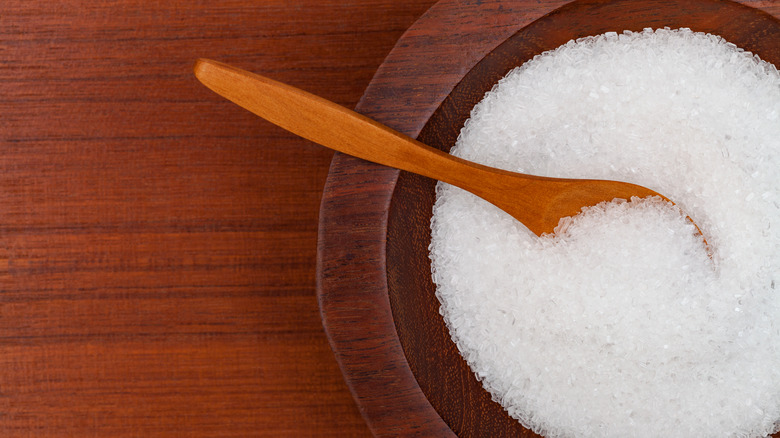Pumpkins are a garden favorite and are a wonder to observe throughout their growing seasons. With so many varieties to choose from, the options seem endless, all with a promise to provide whimsy autumn decor after harvest. That being said, growing your own pumpkins is not for the faint of heart. It does require some intermediate knowledge of gardening and a good deal of attention in order to produce strong, healthy gourds. One hack that has a number of benefits to ensure your pumpkins survive is adding epsom salt in pumpkin patch.
Epsom salt, also known as magnesium sulfate, is a natural fertilizer that can benefit pumpkin plants. It provides essential nutrients to the plants, particularly magnesium and sulfur. Magnesium is essential in chlorophyll production, which is necessary for photosynthesis and overall plant growth. Sulfur, on the other hand, helps in the formation of proteins and enzymes, promoting healthy plant development.
Additionally, epsom salt can help improve the absorption of other nutrients in the soil. It enhances the uptake of nitrogen and phosphorus, which are vital for plant growth and fruit production. This increased nutrient absorption can result in big, healthy pumpkins. To use epsom salt as a fertilizer, dissolve 2 tablespoons of epsom salt in half a gallon of water and apply it around the base of the pumpkin plants weekly during the growing season. You won’t be disappointed!
The need for nutrients

One of the reasons your pumpkins may struggle to perform well in the garden is due to their hunger for nutrients in the ground. Pumpkins are heavy feeders and require substantial nutrients in the soil in order to grow into healthy future Jack-o-lanterns. While epsom salt can help correct nutrient deficient soil, it’s important to know what signs to look for and when it’s an appropriate time to amend the soil with this additive.
One of the key warning signs of a magnesium deficiency in pumpkins is yellowing leaves. In this scenario, the leaves will begin to yellow between the veins, starting on the oldest leaves first and then moving through the newest leaves. This process indicates a lack of chlorophyll production, which can negatively impact photosynthesis and overall plant growth. Ultimately, without amending the soil, it will result in further leaf curling and stunted growth of your pumpkins.
Before running outside with a bag of epsom salt, the best step is to conduct a soil test to determine the ultimate cause of the malnourished pumpkins. While yellowing leaves are often a sign of a magnesium deficiency, it could also be the result of dehydration or environmental stresses like temperature, so amending the soil with epsom salt may not resolve the root cause of the symptoms. In addition to determining nutrient deficiencies, a soil test will also reveal the pH of the soil, which for pumpkins should be around 6.5.
Epsom salt as a natural insect deterrent
One added bonus is that an epsom salt solution will help your pumpkins thrive is also the key to banishing some garden pests that would otherwise feast on your plants. Aphids, slugs, and snails are common pests that can potentially cause harm to pumpkin plants. Aphids are small insects that feed on the sap of the plants, causing stunted growth, yellowing leaves, and distorted fruits. Snails and slugs in the garden, on the other hand, feed on the soft flesh of larger pumpkin varieties before the outer surface hardens. These pests can weaken the plants, making them more susceptible to diseases and reducing fruit production.
If you have noticed any of these creepy crawlies in your pumpkin patch, then epsom salt can help deter and kill aphids, slugs, and snails. To get started, mix 2 tablespoons of epsom salt with 1 gallon of water and 1 or 2 teaspoons of dish soap. Mix the ingredients together until the epsom salt is dissolved and then pour it into a spray bottle. Spray the leaves, pests, or affected areas of your pumpkin plants with the solution to kill existing infestations and discourage future ones. The salt will naturally dehydrate and kill the aphids on the plant while having a similar effect on slugs and snails.